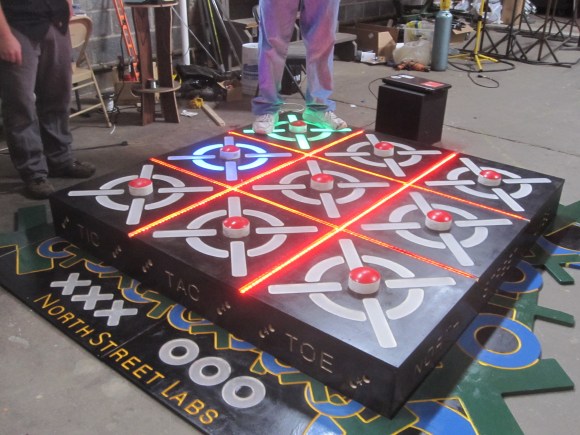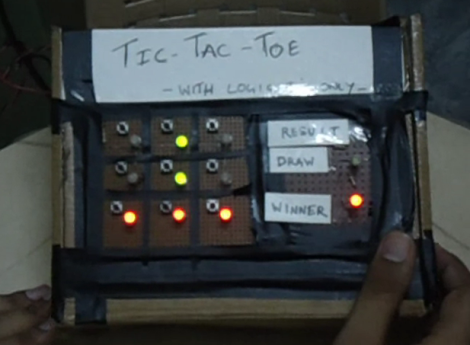We’ll all be familiar with Tic-Tac-Toe, or Noughts and Crosses, a childhood pencil-and-paper diversion which has formed the basis of many a coding exercise. It’s an easy enough task to implement in software, but how many of us have seen it done in hardware alone? That’s just what [Warren Toomey] has done using TTL chips, and his method makes for a surprisingly simple circuit.
At its heart is an 8 kB ROM that contains precomputed move sequences that are selected via an address composed of the game states for both player and machine. A series of flip-flops control and buttons to make the board, and a 555 provides a clock.
The technique of using a ROM to replace complex logic is a very powerful one that is facilitated by the low price of relatively large devices that would once have been unaffordable. We’ve seen the technique used elsewhere, including as an ALU in a TTL CPU, and even for an entire CPU in its own right.
You can see the result in operation in the video below the break, and should you wish to have a go for yourself all the relevant information can be found in a GitHub repository.















